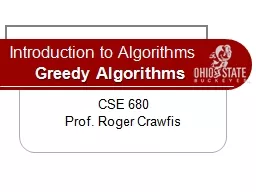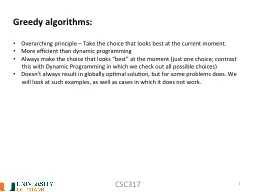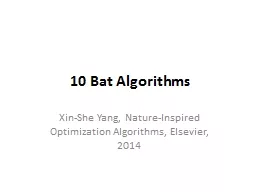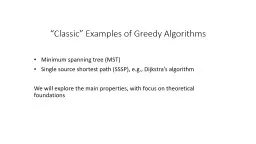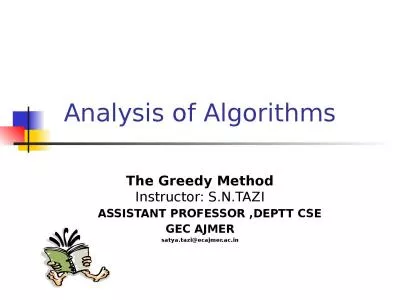PPT-Greedy Algorithms and Classes
Author : discoverfe | Published Date : 2020-06-24
Fall 20151 Week 7 CSCI141 Scott C Johnson Say we go to the bank to cash our paycheck We ask the teller for the fewest bills and coins as possible Moments later
Presentation Embed Code
Download Presentation
Download Presentation The PPT/PDF document "Greedy Algorithms and Classes" is the property of its rightful owner. Permission is granted to download and print the materials on this website for personal, non-commercial use only, and to display it on your personal computer provided you do not modify the materials and that you retain all copyright notices contained in the materials. By downloading content from our website, you accept the terms of this agreement.
Greedy Algorithms and Classes: Transcript
Download Rules Of Document
"Greedy Algorithms and Classes"The content belongs to its owner. You may download and print it for personal use, without modification, and keep all copyright notices. By downloading, you agree to these terms.
Related Documents





